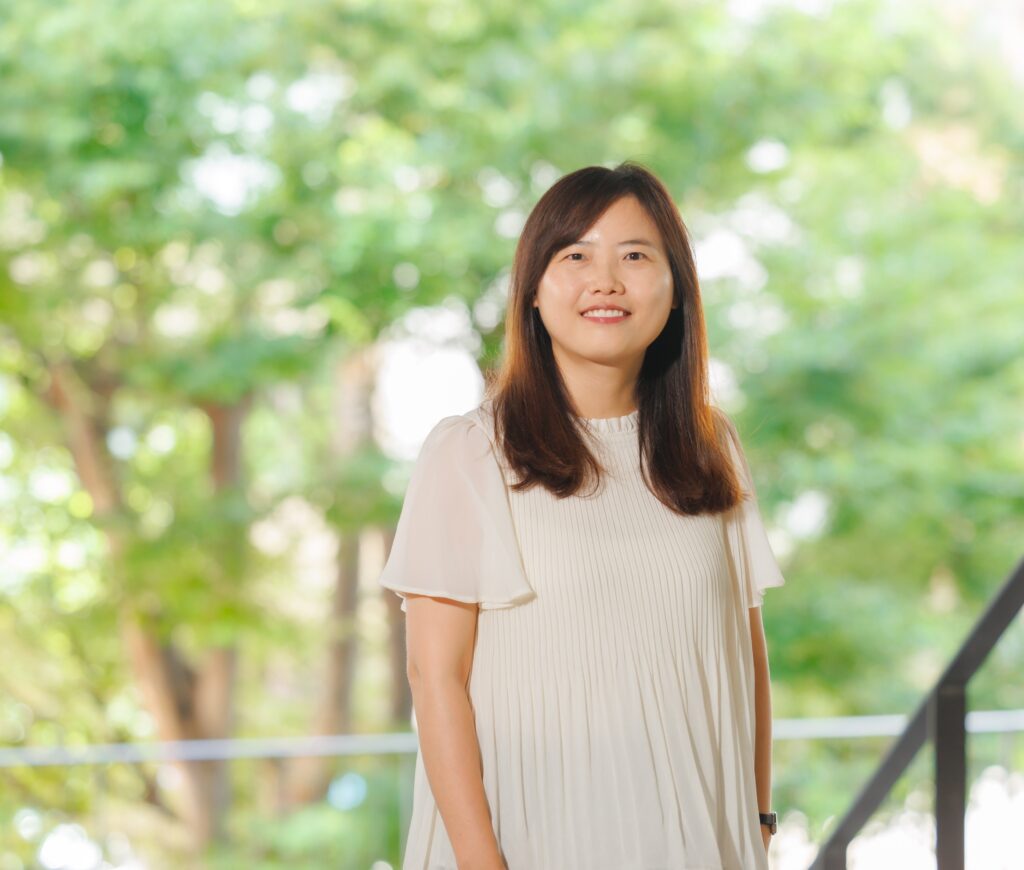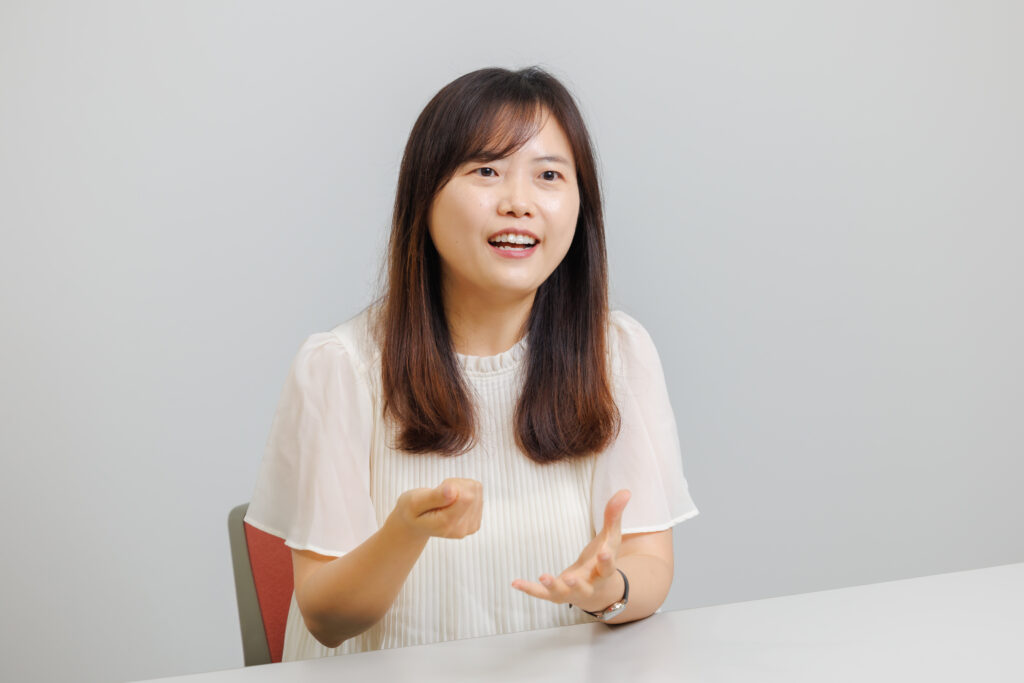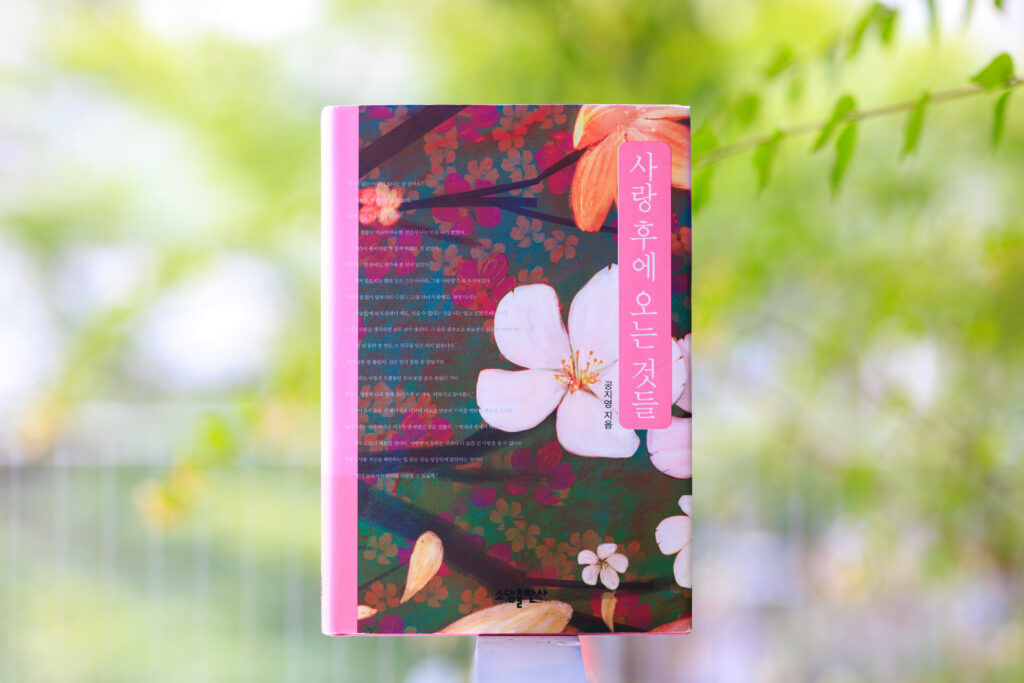
Associate Professor Ahran Kim of the Center for Language Education and Research is an expert in contrastive linguistics, researching the similarities and differences between Japanese and Korean. In addition to actual conversations, she analyzes television dramas, movies, and even television shopping programs to investigate the use of honorific expressions in Japanese and Korean.
My area of expertise is contrastive linguistics, and I investigate the use of honorifics in Japanese and Korean. These two languages have many points of commonality, including basic word order, and the existence of case particles.
One of the biggest similarities between Japanese and Korean is that they both have a system of honorifics. But when you look more closely at these honorifics, it becomes clear that there are many points of difference, too.
For example, both Japanese and Korean use different honorific forms depending on who is being respected. In both languages, “the teacher read the book,” “give a book to the teacher,” and “have you [the teacher] read this book?” would all use different honorific forms for “teacher,” since the teacher is, respectively, subject, object, and listener in these sentences.
But Japanese has a greater number of honorific forms for the subject of an action than Korean—Japanese has multiple forms, Korean has just one. On the other hand, Korean has more honorifics that confer honor on the listener than Japanese.
The evolving use of honorifics

The way honorifics are used changes over time. In recent years, a desire to express oneself with greater politeness has led to an excessive use of honorifics in both Japanese and Korean.
In Japanese, this often takes the form of a double honorific. One example is the combination of “ossharu”—an honorific form of “to say”—with the honorific suffix “-rareru”—to create “ossharareru.”
As I mentioned earlier, Japanese has multiple honorific forms for conferring honor on the subject of an action—and it is this plurality of forms that makes such double honorifics possible.
Such double honorifics are not possible in Korean, since it has only one honorific form for the subject of an action, “si”—but the way in which this is used has also changed over time. The “si” honorific is traditionally used for the subject of an action, but recently it has come to be applied to the listener as well.
Let us say that a customer has ordered a coffee at a café. When the staff member informs the customer that their coffee is ready, they might use the “si” honorific and say, “coffee nao-sy(=si)-esssupnita (your coffee has been poured).”
As you can see, even if social circumstances and emotional intentions are similar, the way this is expressed varies according to the language spoken. This is something that cannot be observed when studying just a single language—and it is one of the aspects that makes contrastive linguistics so fascinating.
For my research, I typically collect data from actual conversations between native speakers; at times, however, I also analyze lines from television dramas and movies in which specific human relationships or situations have been designed. Recently, I have also started using television shopping channels as a source of data, as the speakers tend to use polite language.
A complex relationship with honorifics
I attended university in Korea, and chose Japanese as my first major, and language education as my second major. I then came to Japan as a post-grad student and began researching contrastive linguistics.
I chose to study honorifics because I had mixed feelings toward this grammatical form. I wanted to make friends in Japan, but of course I didn’t want to come across as rude—and so I used honorifics. But the use of honorifics invariably creates a distance between two speakers. I didn’t know what to do.
Precisely because I had complex feelings toward honorifics, I wanted to gain a better understanding of the form. A love of languages is important for the study of linguistics—but it can be an advantage to have experienced a lack of confidence or other difficulties, too.
If such hardships can inspire curiosity and a desire to learn more about the nuances of a language, then it can encourage a focus on areas overlooked or ignored by others, and lead to new discoveries.
The book I recommend
“사랑 후에 오는 것들”(What comes after love)
by 공지영 (Gong Jiyeong), 소담 (Sodam Publishing Co.)

A novel published in 2005, a year that marked the 40th anniversary of the restoration of diplomatic ties between Japan and South Korea. It portrays a romance between two students, a Japanese man and a Korean woman studying in Japan, who break up due to cultural differences, only to meet up again a few years later in Korea. I believe the novel can help both Korean and Japanese readers better understand each other’s countries.
-
Ahran Kim
- Associate Professor
Center for Language Education and Research
- Associate Professor
-
Associate Professor Ahran Kim graduated from the Department of Japanese Language and Literature, Hannam University (her second major was in Korean language education), and received her master’s and Ph.D. from the Graduate School of International Cultural Studies, Tohoku University. After working as an assistant professor at the Center for Language Education and Research, Sophia University, Kim was appointed to her current role in 2018.
- Center for Language Education and Research
Interviewed: July 2023